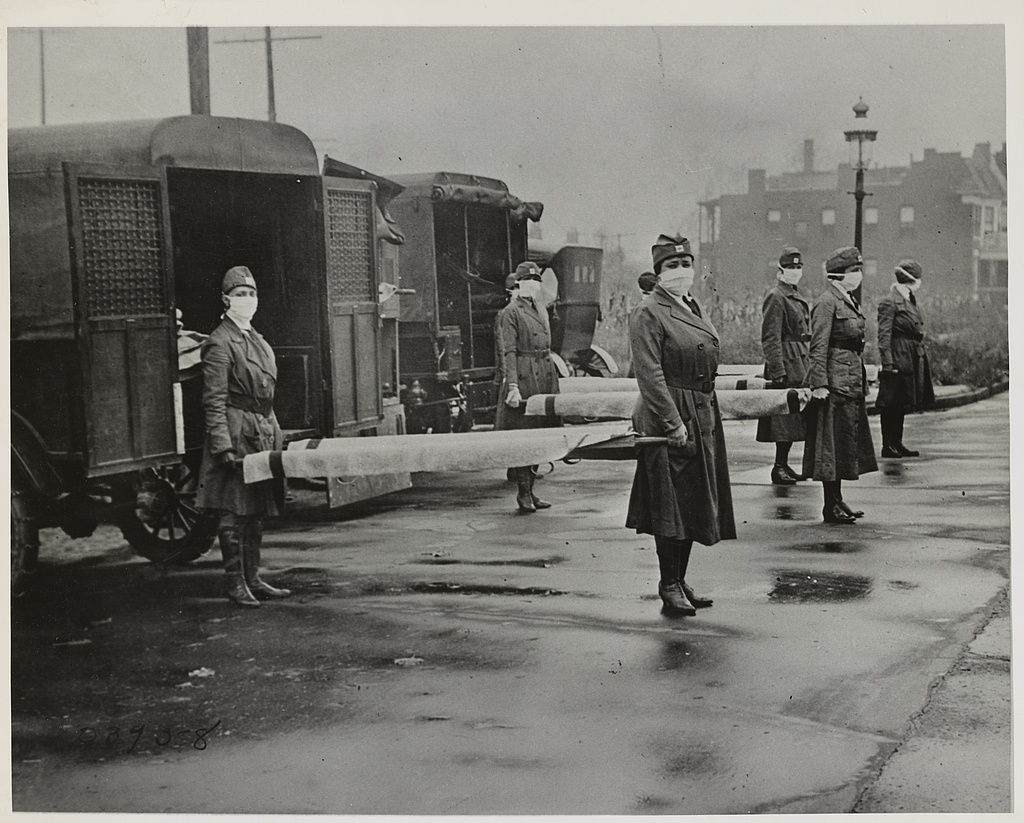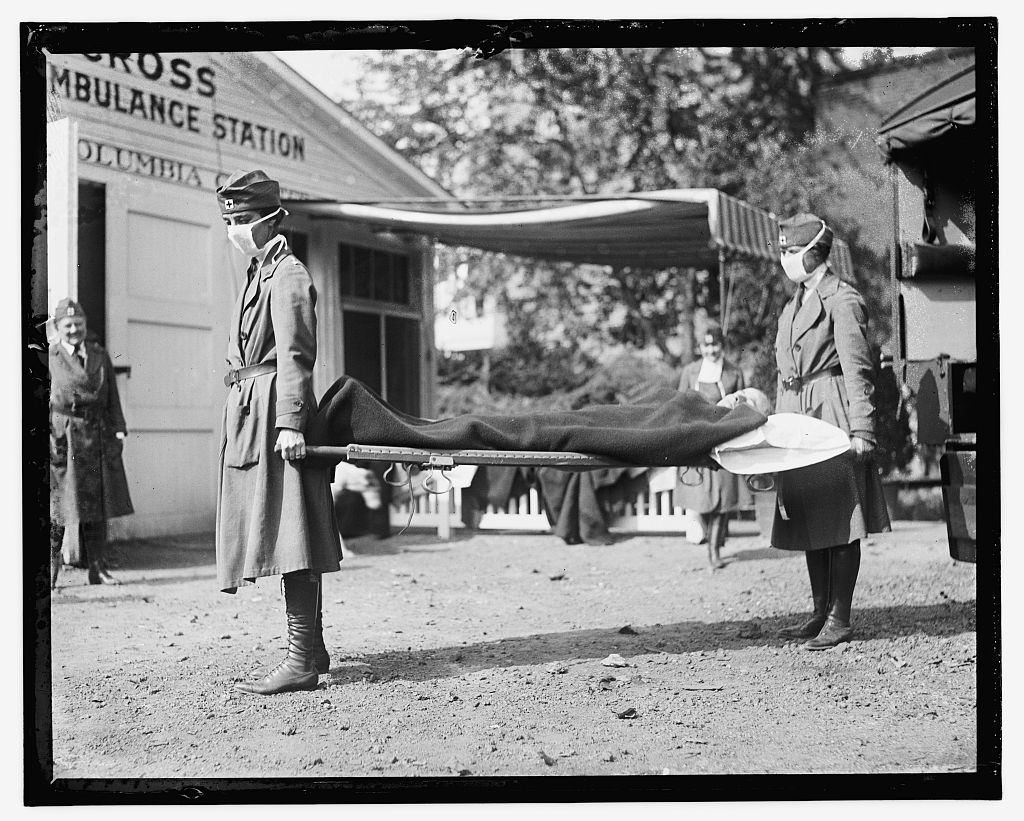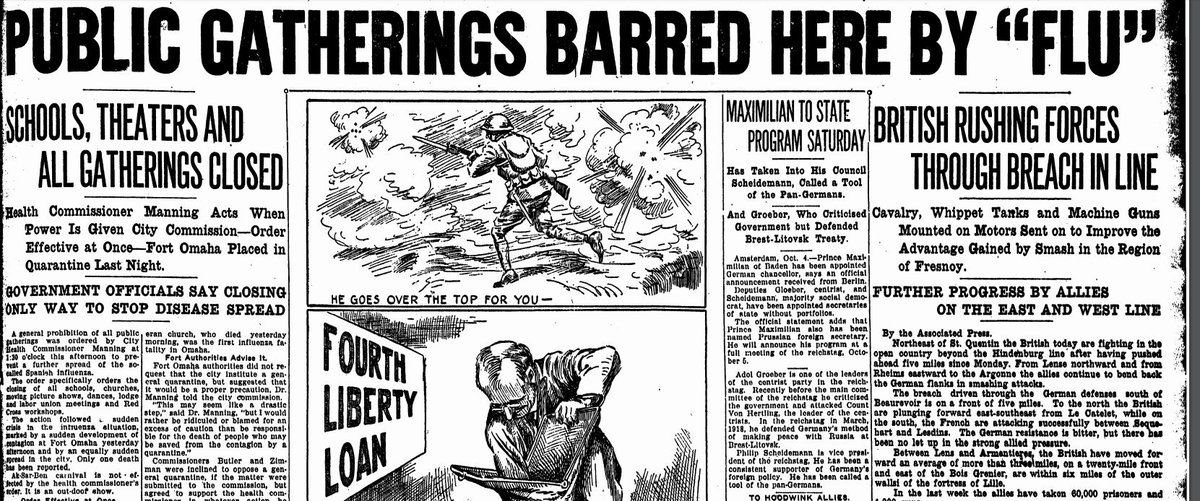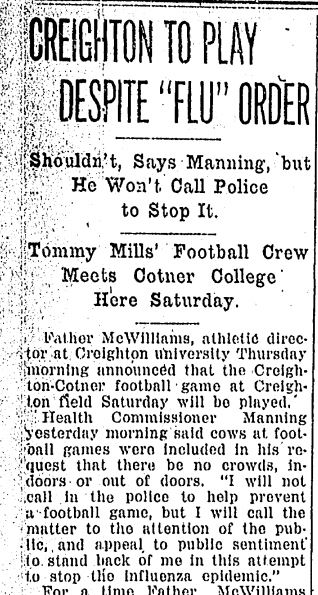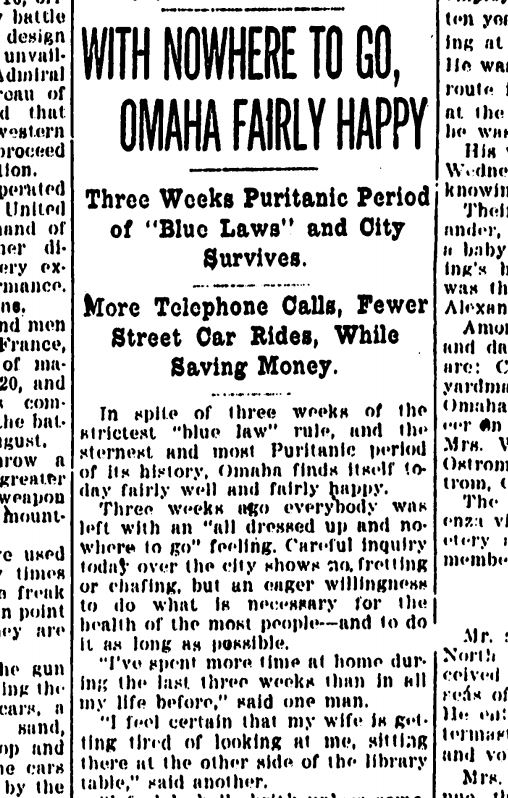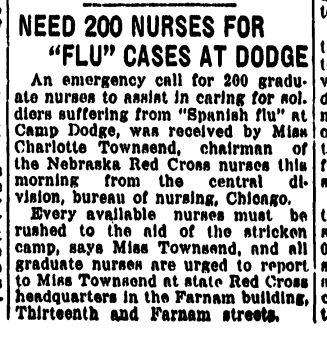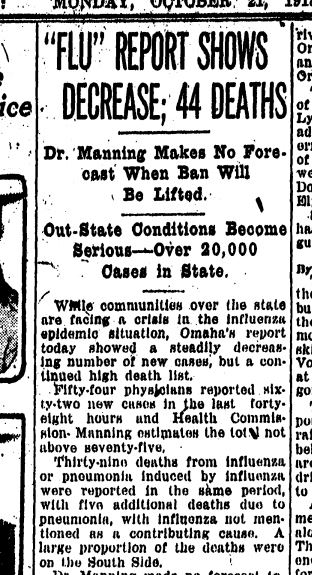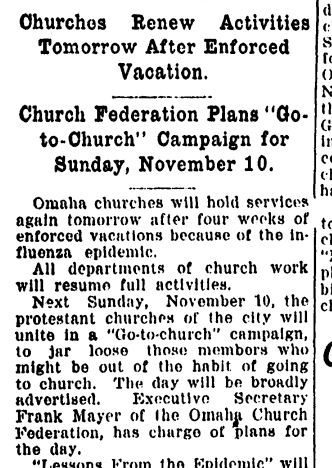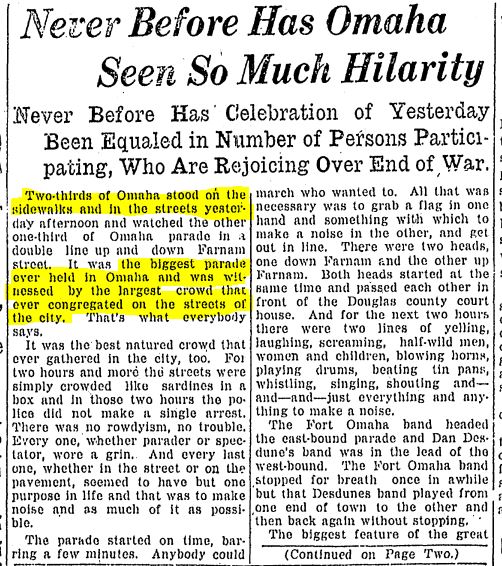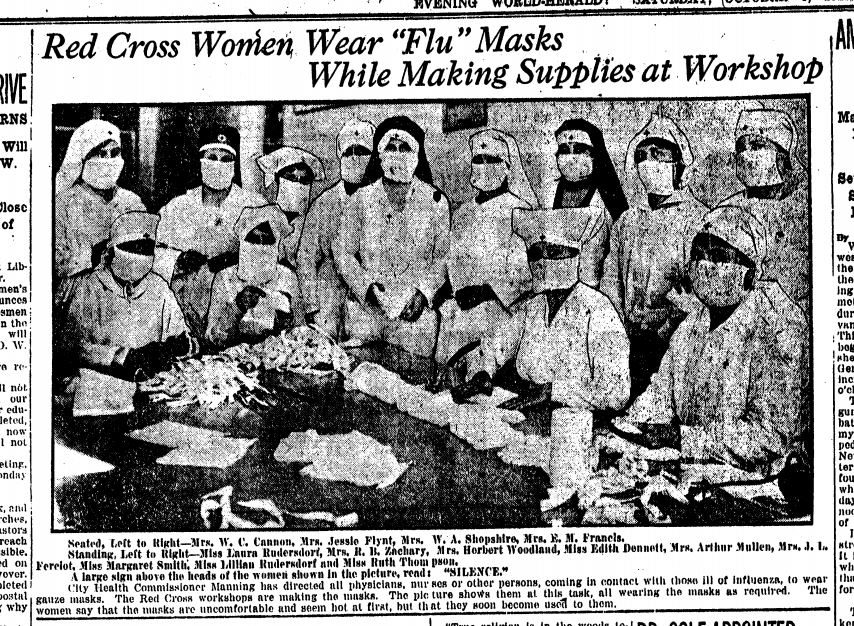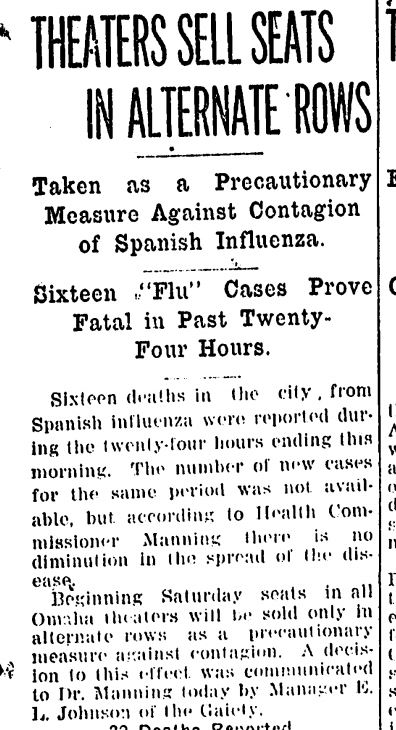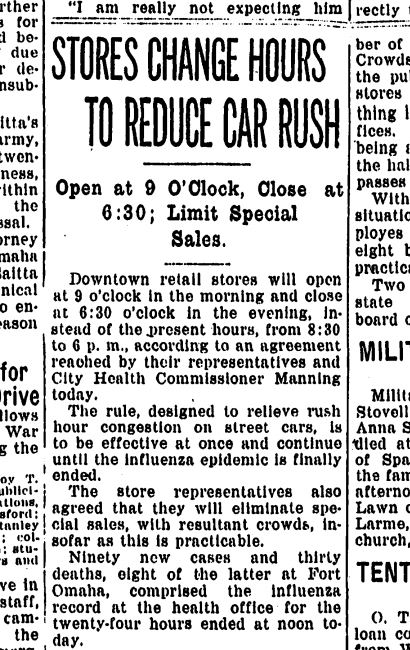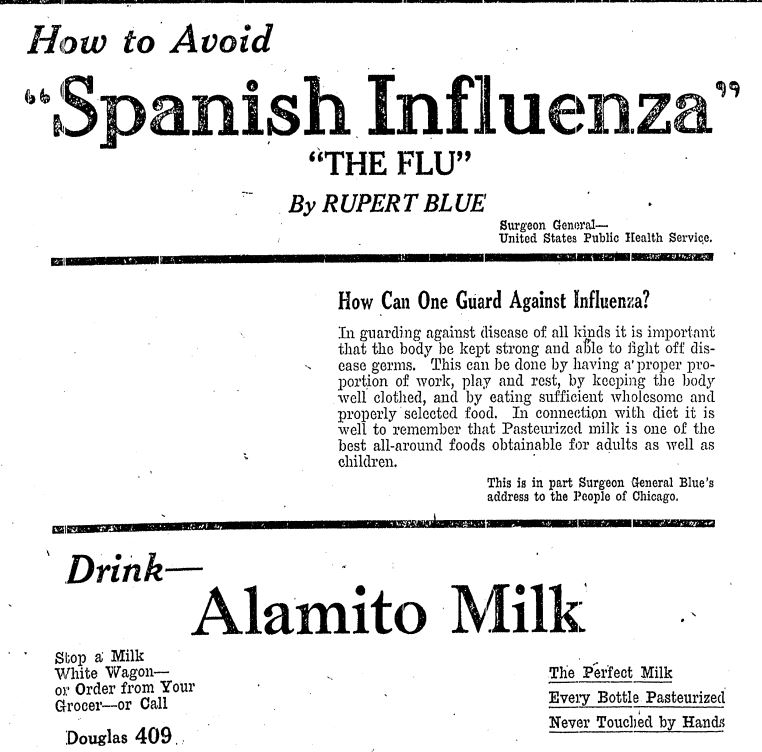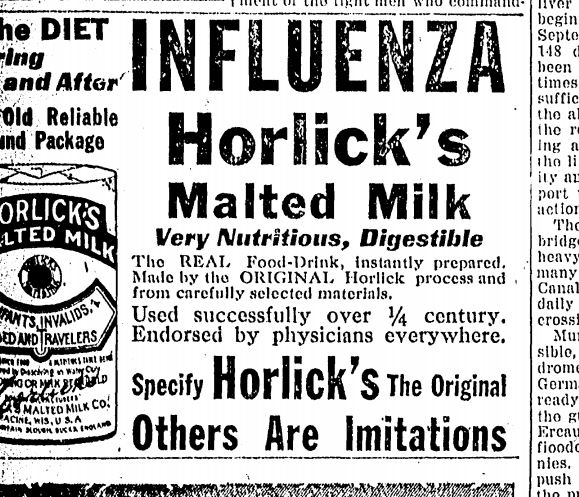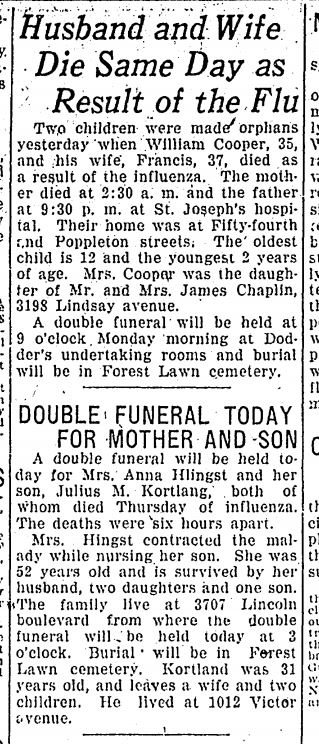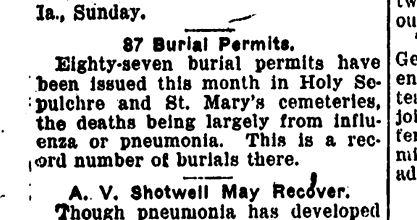More infections every day. Schools closed. Hundreds quarantined. Masks advised.
With all of the #coronavirus worry, I was curious how Omaha responded to one of the worst pandemics in recent history: The 1918-1919 Spanish Influenza outbreak.
1/??
With all of the #coronavirus worry, I was curious how Omaha responded to one of the worst pandemics in recent history: The 1918-1919 Spanish Influenza outbreak.
1/??
Up to a third of the entire population of the world was infected. Estimates for those killed worldwide range from about 21.5 million to 50 million.
2/
2/
In the U.S., about a fourth of the population contracted the disease, and 550,000-675,000 died, more than combat losses from WWI, WWII, Korea and Vietnam combined.
3/
3/
The worst months for Omaha were October-December of 1918.
As the pandemic grew, Omaha Health Commissioner E.T. Manning ordered churches, schools, theaters and other public spaces closed Oct. 4. The city had 25 diagnosed cases.
4/
As the pandemic grew, Omaha Health Commissioner E.T. Manning ordered churches, schools, theaters and other public spaces closed Oct. 4. The city had 25 diagnosed cases.
4/
About a week later, he also banned outdoor gatherings such as parades or funerals. There were now 400 cases in the city. Residents were urged not to share drinking cups. Or be in crowded situations. Or kiss.
5/
5/
Many ignored the ban. Creighton& #39;s athletic director, for example, vowed that upcoming football games would continue.
6/
6/
Finally, the state board of health stepped in Oct. 22, issuing a statewide ban on all groups of 12 or more people. Cases continued to grow.
7/
7/
Nurses and doctors were in short supply. Hospital beds were scarce.
Ambulance drivers were desperately needed, but more than a third of applicants contracted influenza before they could begin.
8/
Ambulance drivers were desperately needed, but more than a third of applicants contracted influenza before they could begin.
8/
Though cases were still occurring every day, the board of health lifted its ban on Nov. 1. The timing allowed politicians a few days to campaign and hold rallies ahead of statewide elections on Nov. 5.
9/
9/
School and church resumed in Omaha on Nov. 3. Department stores held sales and movie theaters had special shows for crowds that rushed back downtown after being stuck at home. Cases almost immediately began to spike again.
10/
10/
The massive Armistice Day parade in downtown Omaha after the end of World War I on Nov. 11 likely did not help.
11/
11/
50-70 cases were being reported each day. Instead of a second closure campaign, a public health campaign began, urging residents to cover their coughs and sneezes.
12/
12/
Other limits were more novel.
Poolroom owners were limited to 2 players and 2 spectators per table.
Theaters were required to seat people only on every alternate row.
13/
Poolroom owners were limited to 2 players and 2 spectators per table.
Theaters were required to seat people only on every alternate row.
13/
The hours of downtown department stores were shifted to lessen crowded conditions in streetcars, in hopes that housewives going shopping would not be traveling at the same time as their husbands going to work.
14/
14/
Vaccine doses were made available to doctors for free. But some physicians turned around and charged up to $10 to give patients the injection.
Other proposed treatments were more suspect.
15/
Other proposed treatments were more suspect.
15/
On Christmas Eve, the state board of health made influenza a mandatory quarantine disease, with fines ranging from $15 to $100 for violations. Across Omaha, about 1,000 homes were placarded as off limits to visitors.
16/
16/
After complaints from businesses, the theater seating order was lifted Dec. 30. The public gathering ban was lifted shortly after.
17/
17/
Though some houses remained under quarantime through February, the worst of the pandemic was over. In Nebraska, reports of deaths ranged from 2,800-7,500. In Omaha, nearly 1,200 people died, according to official statistics, but the actual number could be much higher.
18/
18/
Main sources:
https://digitalcommons.unmc.edu/cgi/viewcontent.cgi?article=1042&context=etd
https://digitalcommons.unmc.edu/cgi/viewc... href=" http://www.influenzaarchive.org/cities/city-omaha.html
19/19">https://www.influenzaarchive.org/cities/ci...
https://digitalcommons.unmc.edu/cgi/viewcontent.cgi?article=1042&context=etd
19/19">https://www.influenzaarchive.org/cities/ci...
And yes, this is the exciting way I spend lunch breaks...

 Read on Twitter
Read on Twitter